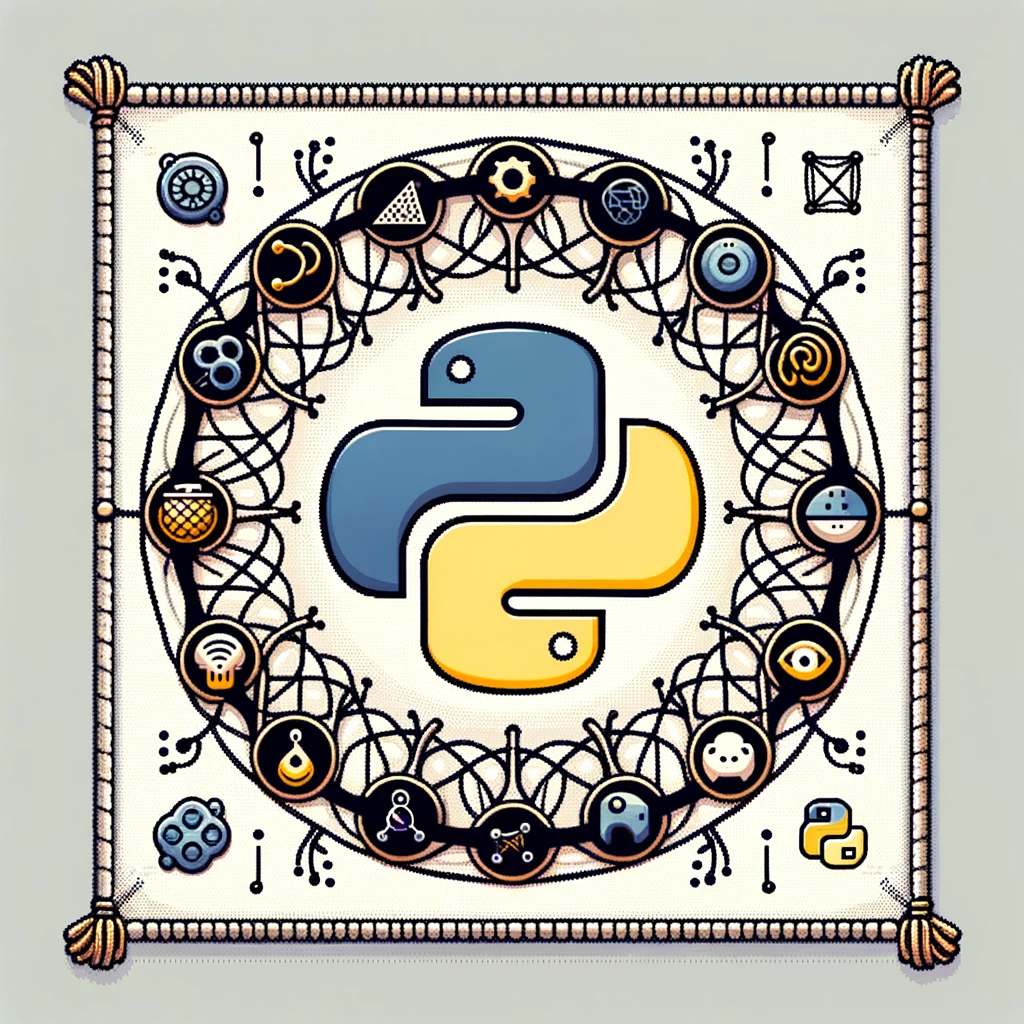Python: The Language of AI Revolution

In the realm of technology, few innovations have been as transformative as Python, a language that has not just shaped but continues to redefine the boundaries of artificial intelligence and machine learning. This post is an expedition into Python's core principles, its profound impact on AI/ML, and a glimpse into its future.
The Genesis of Python: Simplicity Meets Power
Python, conceived by Guido van Rossum way back in 1991, was born out of a desire for a language that combined simplicity with power. As van Rossum himself puts it, “The joy of coding Python should be in seeing short, concise, readable classes... not in reams of trivial code that bores the reader to death." This philosophy has catapulted Python to the forefront of AI/ML, making it the lingua franca for innovators and visionaries.
Python in AI/ML
A Convergence of Simplicity and Sophistication
Characterized by ease of learning and it's versatility. Python is a great language to get started with in programming. You'll find simple, clear and powerful syntax. And Python is very readable, making it a great choice for building reliable systems.
A Rich Tapestry of Libraries and Frameworks
The key of Python's dominance in AI/ML is its rich ecosystem of libraries and frameworks. From NumPy and Pandas for data manipulation to TensorFlow and PyTorch for deep learning–Python offers a toolkit that's both comprehensive and accessible. This ecosystem doesn’t just speed up development; it democratizes AI, allowing more minds to contribute to the field's evolution.

Community & Industry Adoption
The Wind Beneath Python's Wings (err, scales)
Python's rise is a testament to the power of community development. A vast network of developers and researchers continuously contribute to Python, making it a dynamic, ever-evolving language. This community-driven growth makes Python a staple in sectors like tech, finance, and healthcare. As highlighted by Cuong Do from YouTube, Python’s efficiency and maintainability are key reasons for its widespread adoption.
Python in Action: Case Studies and Real-World Applications
Python's versatility shines across various industries. In finance, Python drives real-time fraud detection systems. Healthcare benefits from Python's prowess in image diagnostics, where ML solutions process multifaceted information to aid diagnosis. Even the airline industry leverages Python for dynamic pricing and managing disrupted passenger flights.
Addressing Common Misconceptions
Despite its strengths, misconceptions about Python persist. Some view Python as slow for high-performance computing, but this overlooks Python's role as a wrapper or interface to high-speed libraries and frameworks.
Some people worry about Python's scalability, but organizations like Google have clearly demonstrated Python's scalability in large-scale projects.
Scalability is actually a significant part of Python's appeal. Python works in a range of usecases, from scaling from small startups to large corporate entities–making it an ideal programming language for a wide variety of business applications.
Python's Future
Looking ahead, Python's trajectory in AI/ML is poised for continued exponential growth. As AI becomes increasingly embedded in our lives, Python’s role as a foundational language for developers looks pretty set in stone. Its ease of use, and its robust library ecosystem, mean Python will remain at the forefront of AI innovation.
Actionable Insights
Here are some tips and direction if you want to explore Python more.
Start Small: Begin your Python journey with small projects. This approach helps build a solid foundation and confidence. Websites like Codecademy or HackerRank offer Python challenges that cater to different skill levels.
Explore Python Libraries: Familiarize yourself with Python libraries relevant to AI/ML. Start with Pandas for data manipulation, Matplotlib for data visualization, and then move on to TensorFlow or PyTorch for deep learning.
Participate in Community Forums: Engage with Python communities on platforms like Stack Overflow, Reddit’s r/learnpython, or the Python.org community forums. These platforms are valuable for learning from experienced developers and resolving doubts.
Contribute to Open Source Projects: Once comfortable with Python, contribute to open-source projects. This experience is invaluable for understanding real-world applications and improving coding skills. GitHub is a great place to find projects looking for contributors.
Continuous Learning: Stay updated with the latest developments in Python and AI/ML. Follow Python-related blogs, subscribe to newsletters, and attend webinars or local meetups.
Conclusion
Embracing Python
In sum, Python stands not just as a programming language–it's probably in the top 3 languages with the most potential to positively impact your life, if you learn it (side note: the other two are Mandarin and Spanish).
Embrace Python, and you embrace a world of possibilities.
Additional Learning Resources
Online Courses
Books
- Automate the Boring Stuff with Python by Al Sweigart
- Python Crash Course by Eric Matthes
- Fluent Python by Luciano Ramalho
Podcasts and Blogs
Community and Events
- PyCon: The largest annual gathering for the Python community.
- Python Meetup Groups: Find local Python meetups and workshops.




